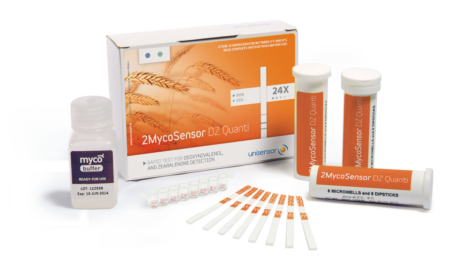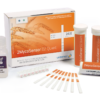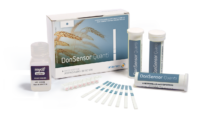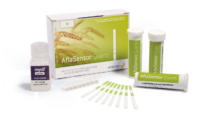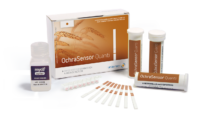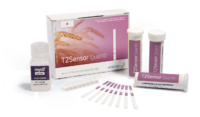Product Description
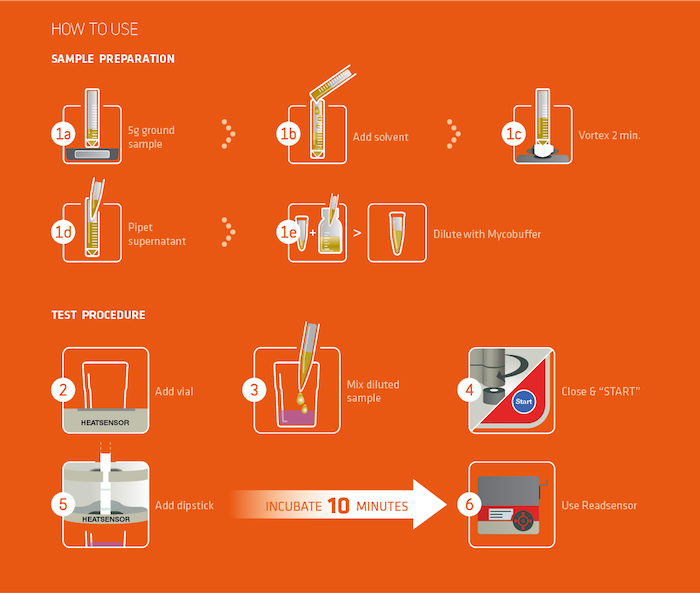 2MycoSensor Quanti is a rapid assay in dipstick format detecting quantitatively the contamination of cereals (corn, wheat, oat, barley) and animal feed samples by Deoxynivalenol and Zearalenone molecules.
2MycoSensor Quanti is a rapid assay in dipstick format detecting quantitatively the contamination of cereals (corn, wheat, oat, barley) and animal feed samples by Deoxynivalenol and Zearalenone molecules.
Principle
2-Mycosensor is a competitive test involving specific antibodies with high affinity for DON (Deoxynivalenol) and ZEN (Zearalenone) molecules.
The test requires the use of two components. The first component is a microwell containing predetermined amount of specific antibodies with high affinity for DON and ZEN molecules, linked to gold particles. The second component is a dipstick made up of a membrane with three capture zones : a “control” line located above the test lines for DON and ZEN molecules.
For a valid test, the upper red control line has to be visible after the test. When the reagents from the microwell are re-suspended with the cereal extract, specific antibodies will bind the analytes if present. When the dipstick is dipped into the sample, the liquid starts running vertically on the dipstick and passes through capture zones. When the sample is free of toxins, a colour development occurs at the “test” lines, indicating the absence of DON and ZEN in the cereal sample. On the opposite, the presence of toxins in the sample will not cause the appearance of the coloured signal at the “test” capture lines.
Good to know
Vomitoxin, also known as deoxynivalenol (DON), is a mycotoxin that occurs predominantly in grains such as wheat, barley, oats, rye, and maize, and less often in rice, sorghum, and triticale. The occurrence of deoxynivalenol is associated primarily with Fusarium graminearum (Gibberella zeae) and F. culmorum, both of which are important plant pathogens which cause fusarium head blight in wheat and gibberella or fusarium ear blight in maize. Livestock and farm animals: In animals and livestock, vomitoxin causes a refusal to feed and lack of weight gain when fed above advised levels.
Zearalenone (ZEN), is a potent estrogenic metabolite produced by some Fusarium and Gibberella species. Several Fusarium species produce toxic substances of considerable concern to livestock and poultry producers. Zearalenone is the primary toxin, causing infertility, abortion or other breeding problems, especially in swine. Zearalenone is heat-stable and is found worldwide in a number of cereal crops, such as maize, barley, oats, wheat, rice, and sorghum.
To protect human health from exposure to these mycotoxins, the European Commission has recently established regulatory limits for DON and ZEN in cereals and cereal-based foods and feeds





